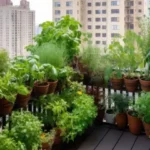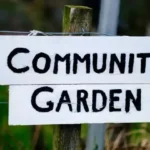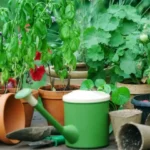In today’s gardening world, a fascinating and eco-friendly method is getting gardeners all around the globe excited. Knowing how to build a keyhole garden bed, a traditional garden setup with a circular design, its capacity to recycle organic matter, and its adaptability to various environments have stirred the gardening community’s excitement.
To build a keyhole garden, select a sunny spot with easy access to water. Mark the center where you’ll position the compost basket, then create a circular bed with a convenient and accessible cutout. Fill the bed with a mixture of kitchen scraps and soil, and select plant varieties that thrive in this gardening style, such as choice herbs, lettuce, and tomatoes.
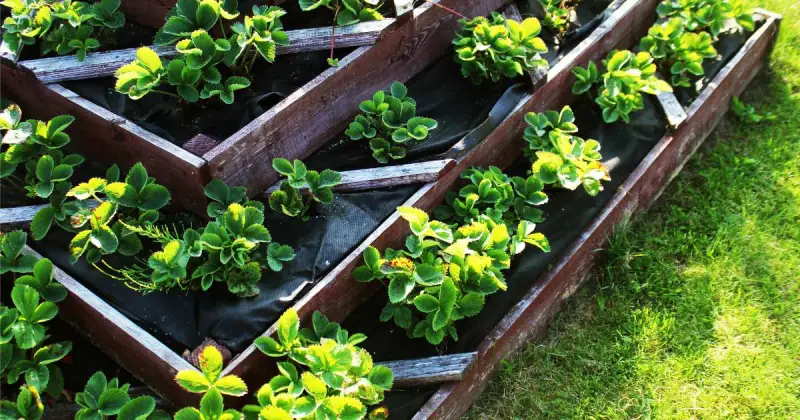
Although there are various methods and ideas for creating the perfect container garden, in this article, let’s take a closer look at keyhole gardening, exploring how it works and its growing popularity among home gardeners.
I will guide you through 10 easy steps to build one, ensuring perfect access and availability. I’ll also share valuable tips on maintaining your keyhole garden and how to steer clear of common challenges associated with this gardening approach. Let’s get started!
Humble Highlights
- Discover the top 5 benefits of keyhole gardening to help cultivate plants and grow your grub – even in the most challenging regions where soil may be poor and water scarce!
- Quickly construct your keyhole garden with this done-for-you 10-step plan so you can get up and running and tend your plants faster than you think!
- Maintain your green space AND keep your crops happy by avoiding these 5 common issues keyhole gardens face so you can nurture and preserve your plants better.
What Is A Keyhole Garden
A keyhole garden is a round raised bed that maximizes space and resource efficiency. It is typically circular or semi-circular and features a central composting basket or chamber, resembling a keyhole from above.
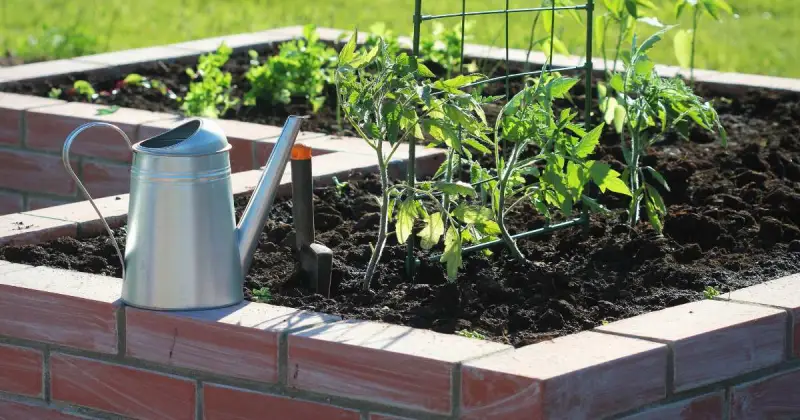
The original keyhole gardens were often made of dry stacked stone, recycled bricks, concrete pieces, or any scavenged material hard enough to hold the soil in and stable enough to support a person’s leaning weight.
Today, they can be constructed from recycled glass bottles, straw bales, wattle (weaving bendy sticks, small branches, twigs, or reeds tightly with each other), or formalized masonry work. Because of this, keyhole gardening is known for its efficient use of space, water conservation, and the ability to grow various plants in a small area. 1
Benefits Of Keyhole Garden Raised Bed
In the 1990s, the original keyhole raised bed was developed in response to droughts and soil erosion in Lesotho, a compact African nation. Its name, “keyhole,” comes from its resemblance to an antique skeleton key lock. Keyhole gardening, a form of permaculture (permanent agriculture), is popular among gardeners and is designed to help those with poor soil grow nutritious produce.
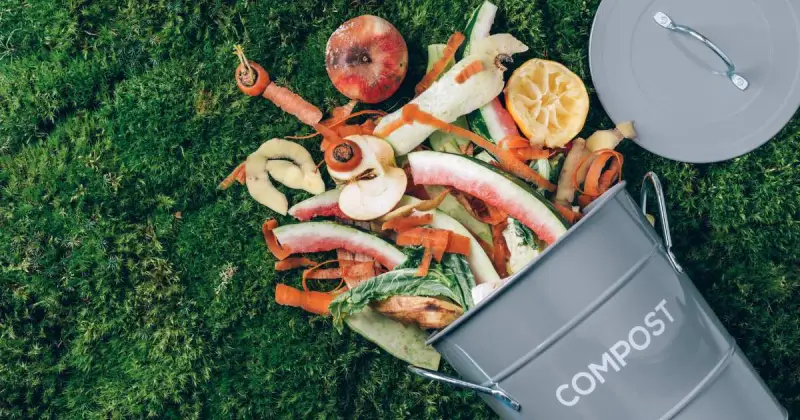
Here are some of its key benefits:
- Water Efficiency: The circular design helps conserve water. As kitchen wastes and water are added to the basket or bin, they release moisture into the surrounding soil, reducing the need for frequent watering.
- Reduced Soil Compaction: Keyhole gardens minimize soil compaction because you can access the entire garden area without stepping on the soil. This unique design leads to healthier root systems and better plant growth.
- Versatility: Keyhole gardens are versatile and can be adapted to different plant varieties, making them suitable for growing vegetables, herbs, flowers, and even small fruit trees. 2
- Improved Soil Quality: As time passes, the compost bin at the center of the garden bed continuously adds nutrients to the soil. This nutrition injection creates a fertile environment that supports strong plant growth, resulting in larger harvests and healthier crops.
- Weed Suppression: Adding a layer of cardboard or newspaper at the bottom before putting the soil can help suppress weed growth, reducing the need for weeding.
Check out the short but informative video below that helps visually detail how simple and fun it can be to create your small keyhole garden – right in your own backyard!
Keyhole Garden Design
When you build one of these unique gardens for your flower or vegetable space, you need to consider the following factors:
- Circular Layout: Opt for a semi-circular or circular raised bed layout to maximize space utilization and prevent the structure from collapsing.
- Size and Dimensions: Determine the size based on available space and your gardening needs, whether using a kit or opting for a DIY approach. Typical diameters range from 6 to 8 feet, although they can be larger or smaller, depending on your available space and ambitions.
- Location and Sunlight: Choose a location with adequate sunlight for your plants. Keyhole gardens should receive at least 6-8 hours of sunlight daily.
- Accessibility and Pathways: Ensure easy access to the center area of your keyhole garden using pathways or stepping stones for navigation without stepping on the soil.
- Raised Bed vs. In-Ground: Decide whether you want to build a raised keyhole garden bed using bricks or stones or create an in-ground version with a raised center composting mound. In other words, dig a circular or semi-circular trench at ground level instead of a raised circular bed. 3
Good access ensures you can easily add kitchen scraps to the compost and maintain your garden without trampling surrounding plants. It also makes the garden more visually appealing.
How To Build A Keyhole Garden Bed
Step 1: Gather Your Materials And Tools
Materials:
- Bricks or stones for the circular bed wall
- Composting basket or chamber
- Soil and compost mix
- Cardboard or newspaper (for weed suppression)
- Small wire mesh (chicken wire or hardware cloth), cut about 4’x 2.5’
- Mulch (optional)
Tools:
- Shovel
- Wheelbarrow
- Gardening gloves
- Tape measure
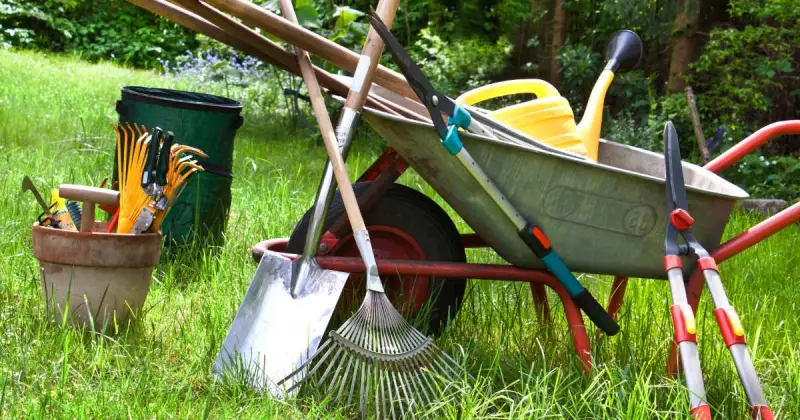
Step 2: Choose A Location
Choose a suitable location. It is best to choose a level space to minimize the need for flattening or smoothing bumps. Ensure it receives at least 6-8 hours of sunlight daily and is easily accessible for watering and harvesting.
It is advisable to avoid placing your keyhole garden too close to large trees as they can compete for nutrients and water, limit sunlight, and hinder plant growth.
Step 3: Plan The Layout
In planning the layout of your garden, decide on the size and shape of your keyhole bed, including how you will build the wall. Most common sizes range from 6 to 8 feet in diameter, with a wedge cut out to allow you to reach a basket at the center of the bed. 4
This central location is the core of its functionality. It’s where organic materials will transform into nutrient-rich compost, nourishing your plants and supporting their growth.
Step 4: Create The Circular Bed Wall
Build the circular bed wall, starting from the center point and moving outward. You can use stacked stones, bricks, or concrete blocks to construct the outer wall of the keyhole garden.
Stack materials to create a raised circular structure with an opening for compost access. If you choose opt to use chicken wire, secure it with stakes to maintain its position and prevent collapse during soil filling.
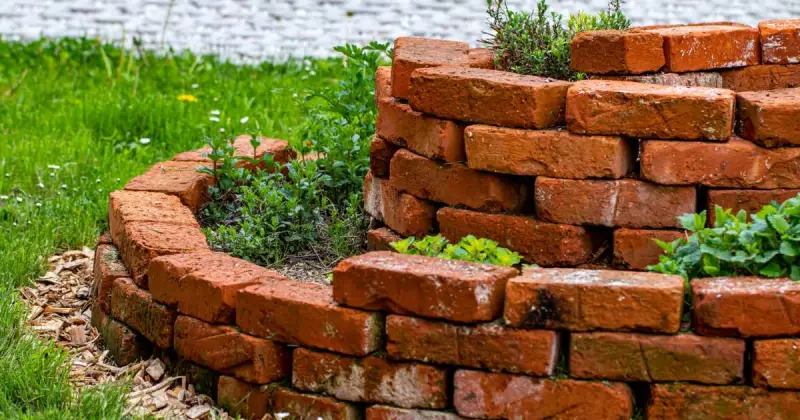
Step 5: Install The Composting Basket
The compost basket is a container in the garden bed’s middle. Its purpose is to take leftover vegetable scraps and other organic materials like dried leaves and untreated grass clippings that you put into the basket and turn them into nutrient-rich food for your plants.
To prevent your basket or chamber from becoming excessively wet, slope the soil layers downward and away from the compost cage, allowing water to disperse throughout the plant area.
Step 6: Prepare The Soil
Line the bottom of the keyhole with cardboard or newspaper to suppress weeds. Then, fill the bed with a mixture of good-quality soil and compost pile. The composting basket in the center will gradually release nutrients from the compost to enrich the surrounding soil enough that the entire bed benefits from this nourishment.
Step 7: Create Pathways
You must designate pathways or stepping stones within the growing plot or bed to allow easy access to planting areas without compacting the soil. Additionally, ensure the entire bed is within arm’s reach from the compost bin in the center for easy access to the surrounding plants.
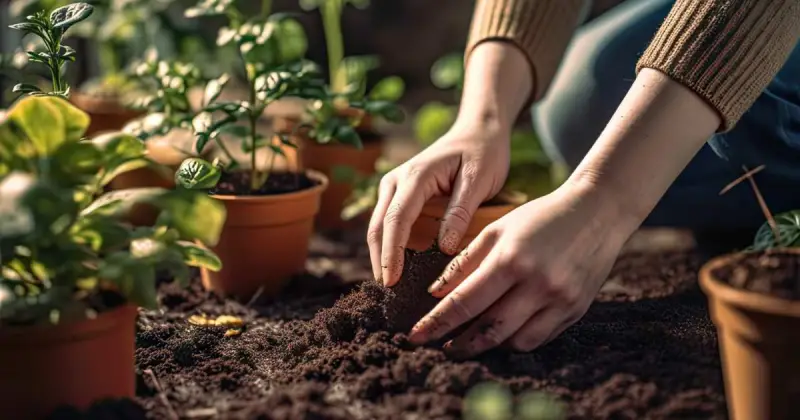
Step 8: Plant Your Garden
You can plant your desired vegetables, herbs, and flowers in the prepared soil, as this method is versatile and suitable for various plants. Some excellent plant options are tomatoes, squash, herbs like basil, rosemary, oregano parsley, lettuce, and carrots. They all benefit from the space-efficient design of the keyhole and are also make great companions to other vegetables. 5
Step 9: Optional Enhancements
You can add optional enhancements, such as a mulch layer around the edges of the bed to retain moisture and suppress weeds. You can also add a fence to protect your plants from animals.
Step 10: Maintain And Water Regularly
Keep the soil consistently moist using a soaker hose or drip irrigation system. Monitor plant health by regularly inspecting your plants for signs of pests, diseases, or nutrient deficiencies, such as yellowing leaves, wilting, or unusual spots.
Although there are many different ways to set up and run a keyhole garden successfully, it doesn’t have to be complicated. Keyhole gardening helps save space, uses less water, and provides your plants with plenty of nutrition. Check out the informative video below on how to start quickly and easily creating yours!
How To Fill A Keyhole Garden
Follow these simple steps:
- Layer 1 (Bottom): Start with a layer of cardboard or newspaper at the base of the plant area. This simple process helps suppress encroaching weeds.
- Layer 2 (Soil and Compost): Fill the area with good-quality soil and rich compost. You can purchase pre-mixed soil and compost or create your blend from your kitchen and garden waste.
- Layer 3 (Composting Basket): Ensure that the basket or chamber in the garden’s center is in the right place. As you add kitchen scraps and organic matter to it, it will gradually enrich the surrounding soil. 6
- Layer 4 (Mulch): Although optional, you may consider adding a layer of mulch on top of the soil to help retain moisture and gain access to a composting basket to prevent further weed growth.
Common Problems Of Keyhole Raised Beds
Smell Issues
Smell or odor issues can arise from excessive moisture or improper composting in the central basket. To address this, ensure your composting materials (nitrogen and carbon) are balanced and not too soggy. Also, remember to cover them with a lid or a generous layer of dry materials like leaves or straw.
You can also place three to five inches of rocks or large gravel at the bottom of the compost cage to facilitate aeration and drainage from the bottom.
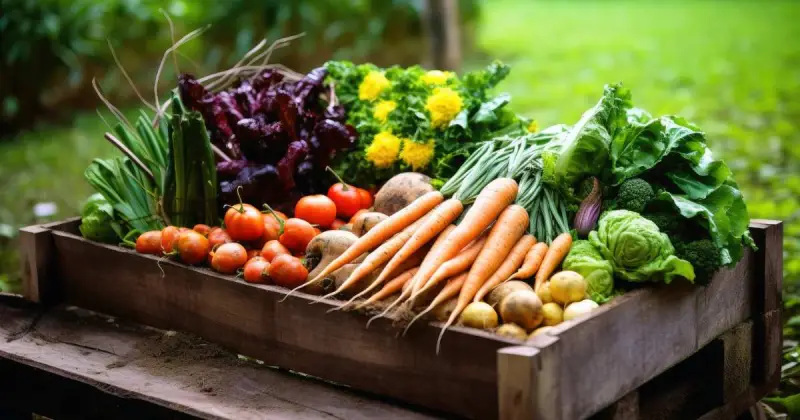
Prevent Nutrient Deficiencies
Nutrient deficiencies can stunt the growth of your plants. To prevent this, regularly enrich your keyhole garden’s soil with compostables that provide essential nutrients to your plants. Nitrogen, phosphorus, potassium, calcium, and magnesium are all vital for proper plant growth. Consider using balanced organic fertilizers if necessary and follow recommended application rates.
Drainage Problems
Poor drainage can lead to root rot and other issues. To fix this, add gravel or sand at the bottom of the bed before putting it in the soil to help organic matter decompose. Refrain from overwatering, and avoid low, soggy spots for your green space. 7

Managing Weeds
Weeds compete with plants for nutrients and space. To manage them, mulch the soil surface and hand-pull weeds when they appear. Avoid chemical herbicides for an organic and sustainable keyhole garden.
Protection From Pests And Critters
Use barriers like fences or row covers to safeguard your plant area from pests like caterpillars, aphids, rodents, and whiteflies. Attract helpful insects such as bees, ladybugs, and butterflies while employing organic pest control methods like Neem oil to maintain a healthy ecosystem.
To deter rodents and minimize attraction to pests:
- Use a secure composting basket
- Avoid adding meat, dairy, or oils to the compost
- Keep the garden area clean, free of food scraps
- Monitor for pest signs and use traps or natural repellents as needed
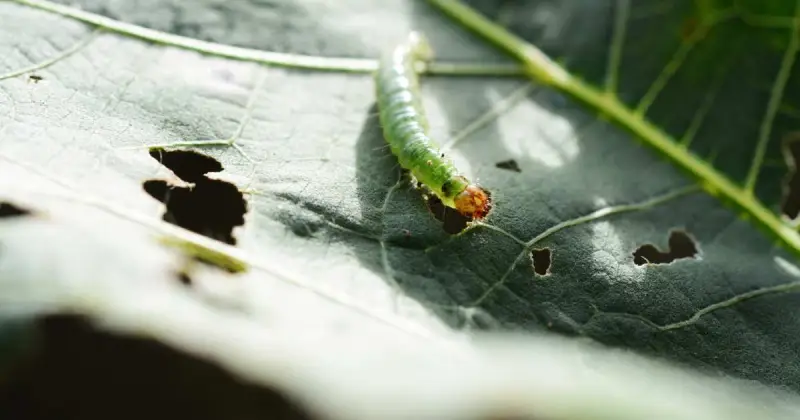
Conclusion
Keyhole gardens demonstrate sustainability, accessibility, and efficiency in gardening. This article unveiled their secrets: turning recycled materials into fertile soil, their space-saving design, and easy accessibility for all, regardless of physical limitations.
As you contemplate building your keyhole garden, remember the core principles: recycling, composting, efficient space use, and nurturing a thriving, accessible plant area. These principles benefit your plants and contribute to a greener, more sustainable world.
So, let the image of your flourishing keyhole garden bed, brimming with vibrant vegetables, fragrant herbs, and colorful flowers, be etched in your mind. As you embark on this adventure called a keyhole garden, you’re not just cultivating plants; you’re sowing the seeds of sustainability, one circular bed at a time.
Do you maintain a keyhole garden? We’d love to hear about your success story and what vegetables do best within your space! Be sure to take a moment and drop us a line in the comments below!
SOURCES
- Texas A&M AgriLife Extension Service, Hunt County Master Gardeners – Keyhole Gardens
- University Of Illinois Urbana-Champaign, College Of Agricultural, Consumer & Environmental Sciences – Keyhole Gardens
- Wikipedia – Keyhole Garden
- National Library Of Medicine, National Center For Biotechnology Information – Decentralized Urban Farming Through Keyhole Garden: A Case Study With Circular Economy And Regenerative Perspective
- World Vision International – How To Build Your Keyhole Garden
- Concern Worldwide – How To Build Your Own Keyhole Garden
- World Vegetable Center – Keyhole Gardens

